Last updated:
Refereed articles
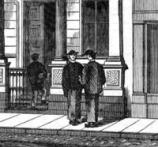
The level of integration of the Chinese goldmining sector into the Victorian mid-nineteenth century economy has been given little attention by historians. How much of the gold won by Chinese miners was spent in Victoria; how much was exported? Was it secreted back to China, as believed at the time, or was it used to finance trade expansion in the Asia-Pacific region? To what extent was cross-cultural co-operation involved in running the Chinese Victorian economic sector?
The business career of Melbourne entrepreneur Lowe Kong Meng (1831-1888) offers a locus around which to discuss these questions. A contemporary account stated that ‘there were reputedly few wealthier men in Victoria than he’ and that the transactions of his firm were ‘on a large, it might be said, a gigantic scale’. A Chinese born in British Penang, he came to Victoria for the gold rush in 1853, and within six years, at the age of twenty-eight, was importing goods from China valued in today’s prices at £6 million per shipment. Educated in English, French, Malay and Cantonese, he traded in food, tea and opium from China to Melbourne, rice from Calcutta to Victoria, and more. His shipments of gold bullion to Asian ports rivalled the international financial exchange of the leading colonial banks. Head of a firm that by the early 1860s had branches in Melbourne, Mauritius, Hong Kong and London, his colleagues included those in the highest political and business circles of Melbourne, as well as New York traders and members of the Shanghai American community.
Using shipping records of the Victorian Department of Trade and Customs held at PROV (VPRS 22, VPRS 38) combined with the wealth of trade and economic data in the Victorian colonial government’s Blue Books (VPRS 943) of the late 1850s and early 1860s, this article interrogates Lowe Kong Meng’s financial and shipping arrangements, explores his business engagement with Chinese and European Victorians, and maps out his part in the international Asian and imperial networks of trade and investment in the colonial era.
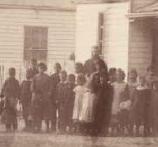
Staffing the Ramahyuck mission school in the nineteenth century
Expand SummaryThis paper examines the employment of teachers at the school on the Ramahyuck mission station in eastern Victoria in the latter half of the nineteenth century. It demonstrates that both physical exhaustion as well as a difficult head missionary resulted in a frequent turnover of staff. Moreover, comments from the teachers supply us with an insight into the daily running of this school for Koorie children. Although the school was on a mission station, the files from the Board for the Protection of Aborigines do not allow a detailed reconstruction of the teaching history of the school, in contrast to the files of the Education Department, which do. By examining one file held at Public Record Office Victoria at length and contextualising it with cross‑departmental correspondence, we can also gain an understanding of where the jurisdictions of each department lay, and of how both teachers and missionaries responded to these structures. The teacher‑centred correspondence does not allow an insight into the responses from Koorie children, and thus their voices cannot be uncovered from these sources. The engagement of Koorie mothers in their children’s education is, however, evident within the file. In the historiography of mission stations in colonial Victoria, historians mostly use material written by missionaries, Church bodies or the Aboriginal Protection Board. This examination of the writings of teachers themselves reveals a new perspective on a Koorie school.

An attempt to resist central control after the 1872 Education Act
Expand SummaryThe 1872 Education Act was designed to make major changes to the way public education was organised and administered in Victoria. Its central concept was the provision of free, compulsory, secular education. To conduct the system a highly centralised bureaucracy was proposed: the government through the Education Department would control staffing, salaries, buildings, the curricula and examinations. Doubts were voiced by politicians and others about the large‑scale shifting of control from the local school committees, but the Act was eventually passed.
In July 1876 the local district inspector ran a two‑day inquiry at Baringhup State School after the head teacher suspended the pupil teacher who had made charges against him to the school’s Board of Advice. This article will examine how power was exercised in this specific situation and the factors affecting the outcome of the inquiry. The crucial issue was who was to control the local school.
Forum articles
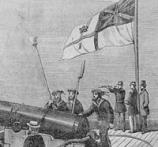
The current Victorian flag with the Union Flag and crown above a Southern Cross originated from the 1877 Victorian flag with a different crown. The 1877 flag was itself a variation on the 1870 flag which did not include the crown. This article presents the evidence for the existence of two earlier forgotten Victorian flags, which intriguingly included a kangaroo in their design.
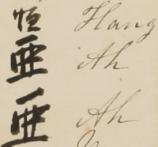
Civic Action in Creswick’s Chinatown
Expand SummaryThis article examines four petitions written by the Chinese community on the Black Lead in Creswick between 1867 and 1873. The petitioners wrote to their local council requesting a water supply to their settlement as well as infrastructure to improve access and drainage. The petitions contain signatures in Chinese, which may be useful for family history research and for the study of networks of Chinese in colonial Victoria. The documents show that Chinese residents were willing and able to participate in the processes of local government.
The four petitions are among the records of the Borough of Creswick, now held in the Ballarat Archives Centre. While court and mining records have already been well utilised to study the Chinese on the goldfields of central Victoria, this article shows that municipal records can also be a valuable resource. They provide a context for understanding why three of the four petitions failed and why the Chinese community in the area declined after the 1870s.
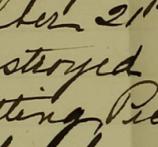
Bendigo Regional Archives Centre (BRAC) is the caretaker of records created by six former councils, now all under the umbrella of the City of Greater Bendigo. Established in 2008, it is a rich resource for genealogists and local historians. The three sections in this article – Gender, Court Records, and Racism – each elaborate upon the central argument that local records held at BRAC allow researchers to tell ‘New History from below’ – that is, to research the stories of women, children and minority ethnic groups who have been omitted from local and wider history writing, partly because the records now housed at BRAC were previously difficult to access. That hurdle is no longer an issue.
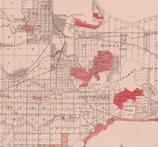
Investigating the Fire at the Steiglitz Coffee Palace in September 1895
Expand SummaryIn rural Victoria in September 1895, the Steiglitz Coffee Palace burned to the ground. At a Supreme Court trial held in Geelong, the jury found two people guilty of deliberately setting fire to the building. As arson was a capital crime in that period, the judge sentenced them both to death. Later, the prosecuting lawyer himself appealed for the release of the two prisoners. Had Joseph Gill and his mother-in-law been condemned on false evidence? This article reveals the curious story of the fire at the Steiglitz Coffee Palace.
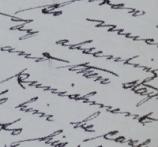
Archival Traces of Mothers and Children in Negotiation with Child Welfare Officials
Expand SummaryThis paper looks at the ways in which child welfare records held by PROV can cast light on the interaction between poor women and welfare authorities as seen through the operations of the variously named predecessors of the current Department of Human Services. It contests the notion that mothers were uncaring and children were unwanted, showing how mothers and the predominantly female inspectors with whom they interacted were able to moderate many of the harsher, punitive aspects of welfare policy.
Material in the Public Record Office Victoria archival collection contains words and descriptions that reflect attitudes and government policies at different times which may be insensitive and upsetting
Aboriginal and Torres Strait Islander Peoples should be aware the collection and website may contain images, voices and names of deceased persons.
PROV provides advice to researchers wishing to access, publish or re-use records about Aboriginal Peoples
